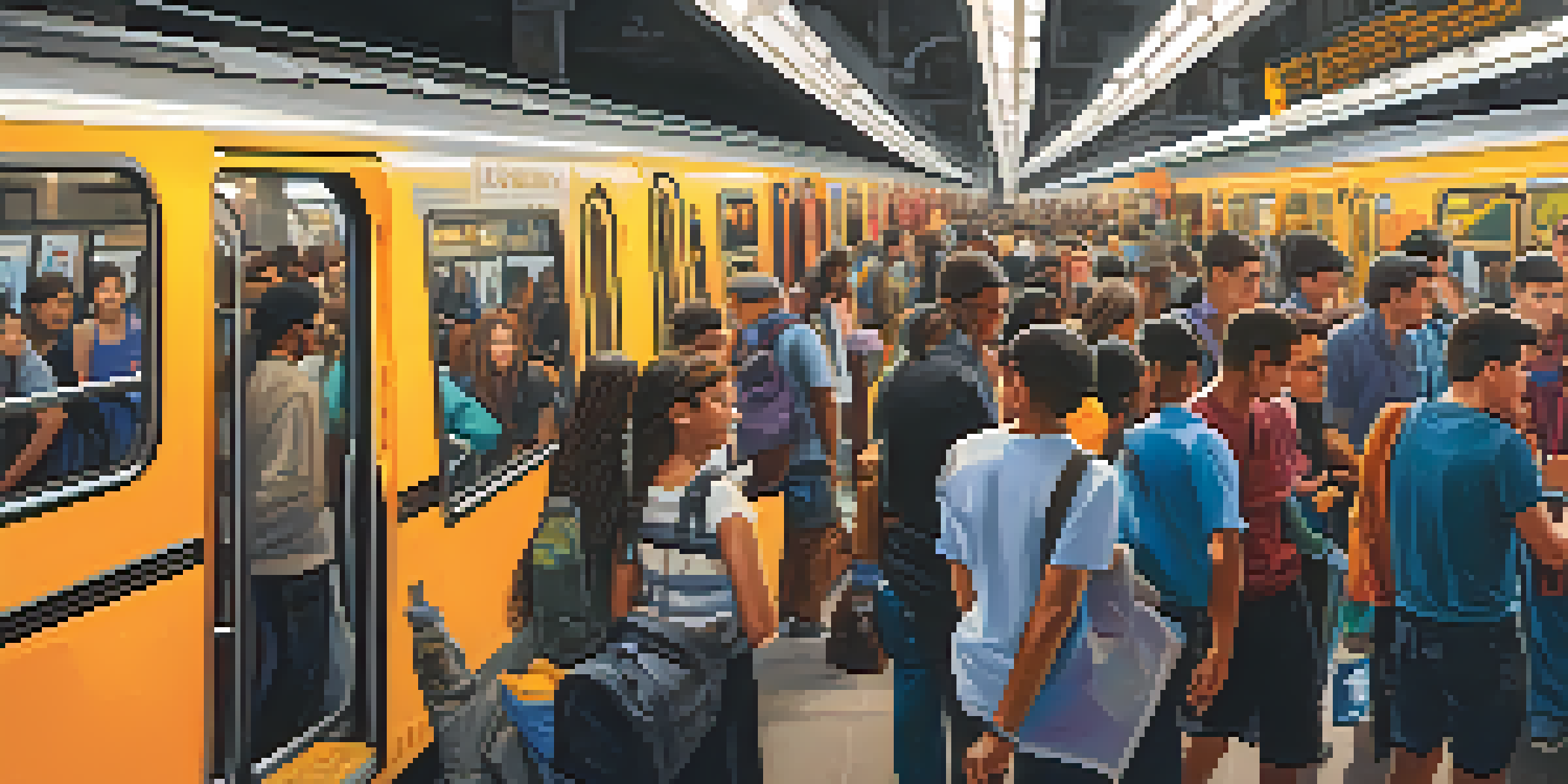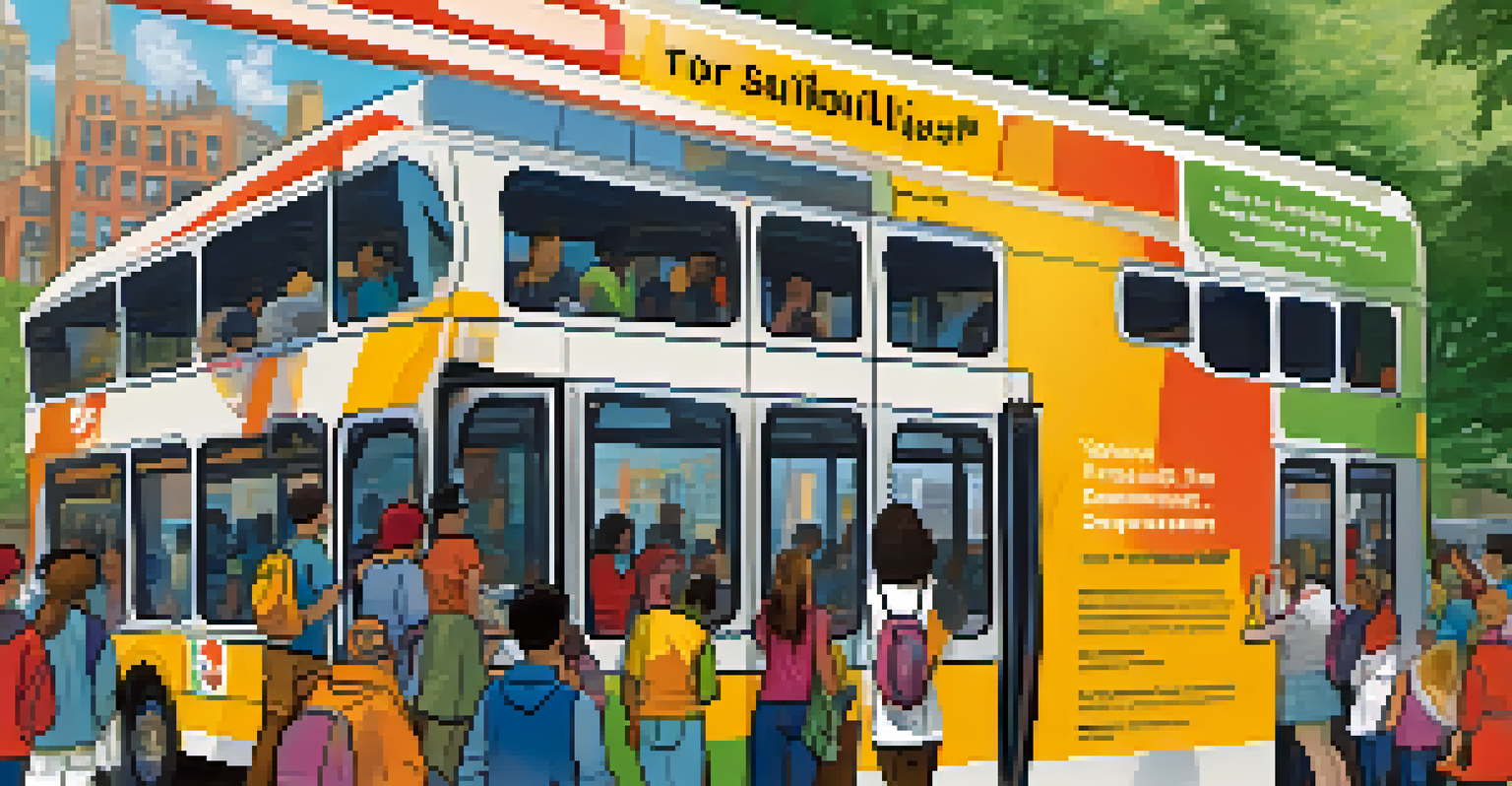Youth Transportation Access: Challenges for NYC Students

Understanding the Transportation Landscape in NYC
New York City boasts a complex transportation network, but it can be a maze for students. With subways, buses, and ferries all in play, navigating this system can be daunting, especially for younger riders. Many students rely on public transport to get to school, extracurricular activities, and jobs, making access crucial for their development and success.
The journey is the destination.
However, the reality is that not all neighborhoods have equal access to reliable transportation. Some students face long commutes or delays that can hinder their education and social opportunities. This disparity in access often reflects broader socioeconomic issues within the city.
Understanding these complexities is the first step in addressing the transportation needs of NYC's youth. By recognizing the unique challenges they face, we can begin to discuss solutions that ensure all students can travel safely and efficiently.
The Impact of Long Commutes on Students' Lives
Long commutes can take a toll on students, affecting their academic performance and well-being. Studies have shown that excessive travel time can lead to fatigue, which can hinder concentration and focus in class. This struggle is particularly evident in students who spend hours commuting to and from school each day.

Moreover, long travel times can limit students' participation in after-school activities, sports, and social events. When students are exhausted from lengthy commutes, they may miss out on valuable experiences that contribute to their personal growth and development. It's like running a marathon every day just to get to class.
Access Disparities Impact Students
Students in NYC face unequal access to reliable transportation, affecting their education and social opportunities.
Addressing these issues is vital for fostering an environment where students can thrive. By reducing commute times, we could enhance their overall academic experience and encourage more active participation in their communities.
Safety Concerns for Students Using Public Transport
Safety is a significant concern for students who rely on public transport. Many young riders are vulnerable to potential dangers, including harassment, accidents, and crime. This fear can discourage students from using public transportation, leading to missed classes and lost opportunities.
Transportation is a critical issue for students, impacting their education and future opportunities.
The unpredictability of transit schedules adds to these fears. Delays and overcrowding can create stressful situations, especially during peak hours. Students often find themselves navigating crowded trains or buses, which can be intimidating for those who are not used to such environments.
To create a safer commuting experience, it's essential to advocate for improvements in transit safety measures. This includes increased surveillance, better lighting at stations, and more staff presence during peak times.
Economic Barriers Affecting Transportation Access
Economic challenges significantly impact students' access to transportation. While public transit is generally affordable, the costs can still add up, especially for families with limited resources. The expense of transportation can be a burden, leading some students to forgo public transit entirely.
Additionally, not all students can afford the necessary transit passes or fare cards, which can restrict their mobility. This limitation can prevent them from attending school regularly or participating in extracurricular activities, affecting their overall engagement.
Long Commutes Hurt Academic Success
Extended travel times can lead to fatigue, hindering students' concentration and limiting their participation in activities.
Addressing economic barriers requires a multifaceted approach, including subsidized transit passes and community support initiatives. By alleviating these financial pressures, we can help students access vital transportation services.
The Role of Technology in Improving Access
Technology has the potential to revolutionize transportation access for NYC students. Apps that provide real-time transit updates can help students plan their journeys more effectively, reducing anxiety around commuting. With just a few taps on their smartphones, students can gain valuable information about train schedules and bus arrivals.
Moreover, ride-sharing services and bike-sharing programs can offer alternative transportation options. These solutions can be particularly beneficial for students who live in areas with limited public transit access. Imagine a student being able to hop on a bike instead of waiting for a bus that may never arrive.
Embracing these technological advancements can pave the way for more efficient and accessible transportation solutions for the youth of NYC. By integrating technology into the transportation system, we can ensure that all students have reliable options at their disposal.
Community Initiatives to Support Student Transportation
Community organizations are stepping up to address the transportation challenges faced by students. Many are working to create safe routes to schools, organizing walking groups, and providing resources to help families navigate public transit. These grassroots efforts can significantly impact students' daily lives and their ability to access education.
Some initiatives focus on providing mentorship and support to younger students, helping them learn how to use public transport safely. By fostering a sense of community, these programs not only enhance transportation access but also create lasting connections among students and families.
Community Support Enhances Access
Local initiatives are helping to create safe routes and resources, improving transportation access for students.
Through collaboration and community involvement, we can build a stronger support system for students facing transportation challenges. When we come together, we can make a difference in their lives.
Policy Changes Needed for Better Youth Transportation Access
To truly address the transportation challenges faced by NYC students, policy changes are essential. Advocating for improved public transit infrastructure, including more reliable service and better connections, is crucial for enhancing access. Policymakers need to recognize the importance of transportation in education and community engagement.
Additionally, creating policies that focus on youth-specific transportation needs can lead to more inclusive solutions. This includes considering the unique challenges faced by students with disabilities or those living in underserved neighborhoods.

By pushing for these changes, we can create a transportation system that supports the needs of all students, ensuring they have the access necessary to succeed in their education and beyond.